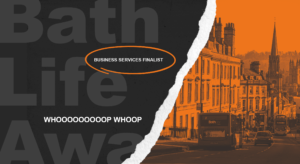An interview with AIA Executive Creative Director, Heather DeLand
Starting out as a journalist, Heather DeLand has 20 years of copy experience across marketing, advertising and content. She now works as an Executive Creative Director for AIA Worldwide, a technology business dedicated to talent marketing, personalised employer branding and communication.
“We aren’t here for vanity, we’re here to take on challenges for our clients and solve them.”
During her career, Heather has worked with some well-known names like the AA, the NHS, the Civil Service, EY, and M&S on projects that have challenged her to write, direct, deliver social media and more. She is also a conference speaker and a mentor for women in the creative industries. Heather is a creative all-rounder and she shares some interesting observations about the state of content marketing.
1. What sparked your interest in the creative industry?
I’m a writer by nature. Someone gave me a journal when I was nine, and it gave me a vehicle for something that I think I was born with. I started documenting my experiences every day.
At the time it was therapeutic, and something to do to pass the time growing up in a remote place before the internet. But it turned me into an observationist. I liked to watch, analyse and record. I studied Literature and Rhetoric at university with a view to becoming a war correspondent, having heard stories from an uncle who served in Vietnam.
When I was 19, I still believed somehow that my writing could bring about world peace! Bless. I tried all kinds of things: journalism, performance poetry, photography… For me it was all about documenting and expressing emotional truths from my experiences that would resonate with others.
2. What was your first role within the creative industry?
I worked three jobs to put myself through university. Two of them were definitely NOT creative. But I badgered the editor of a local weekly newspaper until she gave me a job as a journalist – that was a part-time job I’d do in the evenings and weekends. It was covering things like town meetings and Boy Scout fundraisers, but I took it really seriously and always dressed like I was about to cover the evening news on national television, rather than just a bake sale at the local fire department. Pencil dresses with brass buttons, in this rural town.
3. What have been some of the biggest challenges you’ve faced during your career i.e. with a campaign, project or piece of content?
I think one of the big challenges is being original and trying something that’s not been done before. I think most creatives have that restless instinct. But we are working with people who are sensible and risk-averse: project managers who have to make our bonkers ideas work, clients who have to find a bit more budget or convince their boss or their brand department. There are good reasons to be risk-averse!
Our job as creatives is to earn the trust of those partners, to thoroughly research what we’re proposing, and to demonstrate the return on investment. We aren’t here for vanity, we’re here to take on challenges for our clients and solve them.
“I guess you get a little wild when there’s no one there to encourage you to be sensible!”
Part of that is being original, being innovative, seeing if you can achieve a bit of fame so that the communications you’ve created reach and engage more people. But it’s a fine balance to get that all right. When you are trying to convince someone that we need to use drones or we need to use augmented reality, and the case studies don’t exist yet – that’s difficult. A lot of times people will say ‘no’.
You need to accept that ‘no’ and realise that not everyone will take risks and trailblaze. You have to keep trying though. You need a lot of empathy and resilience to know when to push and how hard, and to keep your partnership going when different people move at different paces.
4. Do you have a favourite campaign, project or piece of content you’ve created or contributed to, which you’re most proud of?
I do. I should probably say “oh I love them all, they’re like my children, I couldn’t choose”, but I can. A financial services client was trying to attract graduates in technology, and they weren’t really on the map in people’s perceptions – everyone wants to join Apple or Google or some Silicon Roundabout start-up. So in addition to the expected channels to reach these people, we suggested that they do some on-campus innovation. I didn’t have an art director available so I went into a room and came up with all these ideas on my own, one of which was to create a beautiful fibre-optic garden on four key campuses, to appear after dark outside of buildings where the right subjects were taught.
I guess you get a little wild when there’s no one there to encourage you to be sensible! It was out of budget too, but they needed something big. They loved it, and I got to go to this workshop in the West Country somewhere, to work with an incredible artist called Bruce Munro to make this light installation out of fibre-optic cables and undulating lights. It was beautiful, the most artistic thing I’ve ever been able to work on. It also got them all the applications they needed. It won ‘Work of the Year’ that year and I was so proud. I felt a sense of ownership of that one.
And I went to a Women in Technology conference seven years later and they were still using the brand. I took a picture of the stand and someone on it asked if they could help me, I said “I wrote that line seven years ago, I can’t believe you’re still using it!” She shook my hand and said they love it. I could have cried!
“Content with purpose enriches the person consuming it.”
5. Do you follow any influencers within the creative industry? If so, who and why? If not why is that?
I depend on my influencers, they’re a big part of my inspiration. Cindy Gallop is a big one, she is a pioneer of agency leadership, really challenging the patriarchal structures that drive not just agencies but the advertising itself.
I follow Minda Harts who has really crucial thinking on racial equality. The persistent lack of diversity in our industry really limits how good our work can be. I also really like Female Copywriter on Twitter for unmasking the dynamics and being hilarious.
I take inspiration from the wider world too, though. Susie Wolff’s achievements in Formula 1, Marie Colvin’s contribution to journalism, Munroe Bergdorf’s honesty and ability to inspire compassion in others. My original love of human truth well expressed is never far from me, so I continue to learn from others.
6. Can you name three tools you use that help you with campaigns, projects or creating content?
Analytics. The business I’m in has a lot of data and it’s crucial. We’re quicker than ever at being able to test, review, and optimise. You don’t have to guess what works, you can just find out and then go do more of it. To the young, that sounds obvious but I remember having a choice of endless focus groups or else waiting weeks to see what was working, and not having any tracking. The modern world is luxurious.
Microsoft Teams. The creative process has to be underpinned by a team and a project plan. Communicating with my partners is an important part of arriving at the best product. Knowing that they’re all there and being able to ask questions frees up my mind to think creatively.
Post-its and Sharpies. I still like to lock myself up and cover a wall with thinking I can unstick and regroup until I get there. The digital version is my Miro board, which makes it a bit more shareable.
7. What advice would you give a young person looking to start a career for themselves in the creative industry?
Make sure you really love it, because you will experience pain and rejection to get there. It has to be worth it if you’re going to muster up the resilience. I had hundreds of rejections and a few redundancies too.
You have to be practical. Don’t be too proud. Think about ways you can be employed and put a roof over your head. It’s romantic to think of yourself as a starving artist, but actually starving isn’t cool. I did what I had to do – a bunch of jobs that weren’t plan A. For a while, I worked on reception at Sky television because it was vaguely near what I wanted. When bigwigs came in for a meeting, I would get them a coffee and then very cheekily give them my CV as reading material while they waited. I could have, and probably should have, been fired for that. But one of the people I did that to thought it was really brassy and offered me a job.
You have to keep your self-respect; you don’t need to grovel and take unpaid internships. But you do have to work your way up and find a way to be cheerful about work that is ‘beneath’ you and have a word with yourself every day. Remember that you are fighting your way up and if you keep knocking on the door eventually they will just get annoyed with the knocking and give you a shot. Or fire you so you can do something else!
8. What does the term ‘content with purpose’ mean to you?
The world is full of hot air. Fake news. People who like the sound of their own voices. People who are unresearched but talking anyway. Content with purpose enriches the person consuming it. It gives the viewer something of value. Content with purpose goes on as long as it informs and engages, and then it knows when to stop. Which is probably a good way to end an interview!
Need help creating strategic content that has purpose? Email contact@thatmediathing.com today to find out how our experts can add something extra to boost your customer engagement.



